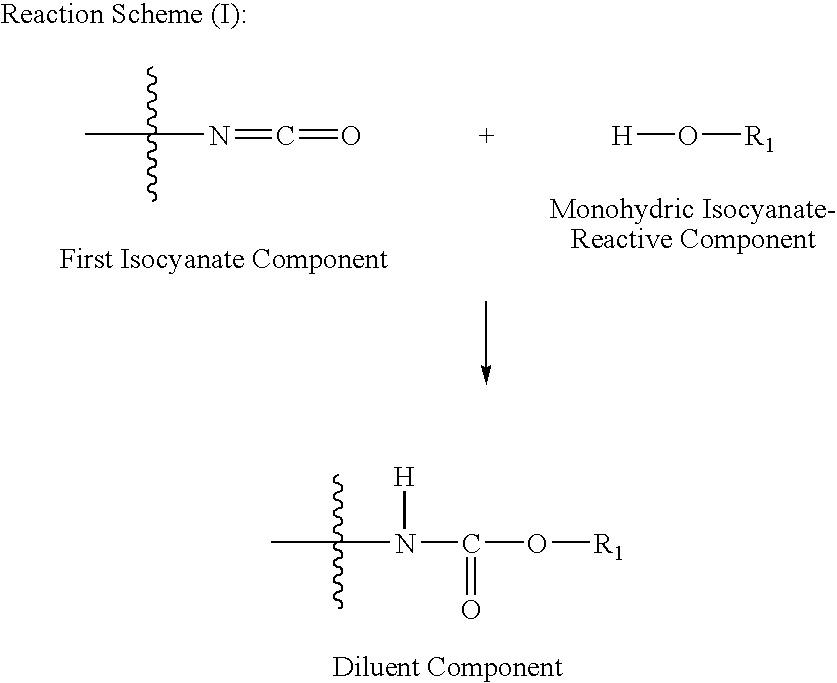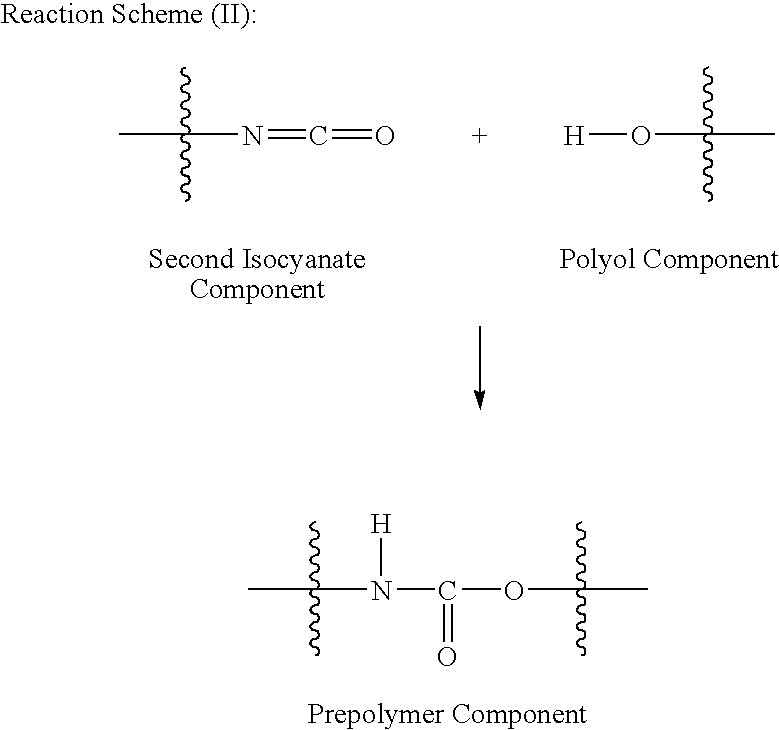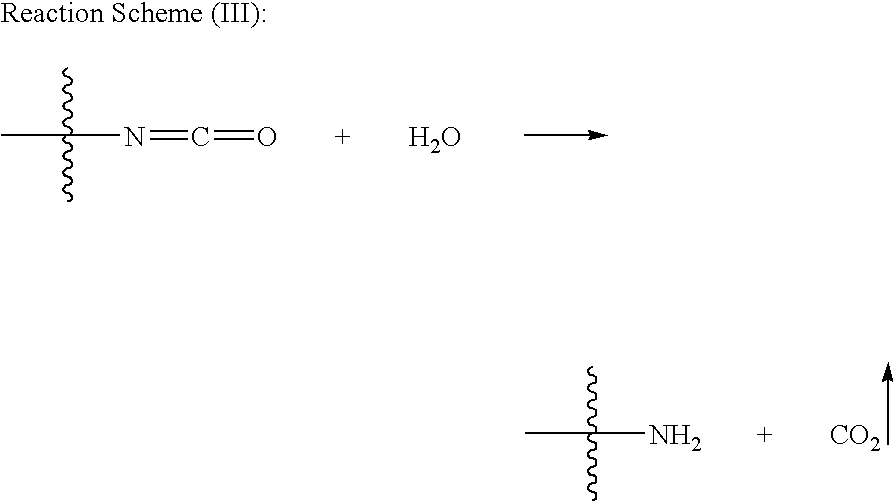Prepolymer systems having reduced monomeric isocyanate contents
a monomeric isocyanate and polymer technology, applied in the field of prepolymer systems, can solve the problems of vaporous isocyanate problems that must be remedied by expensive air-handling systems, general knowledge of irritant when inhaled, and increase the cost of air-handling systems, so as to improve the control of final properties, improve formulation flexibility, and improve storage stability
- Summary
- Abstract
- Description
- Claims
- Application Information
AI Technical Summary
Benefits of technology
Problems solved by technology
Method used
Image
Examples
examples
[0116]Examples of the diluent and prepolymer components are prepared. The amount and type of each component used to form the diluent and prepolymer components of the prepolymer system is indicated in Table I below with all values in parts by weight based on 100 parts by weight of all of the components prior to reaction to make the respective component unless otherwise indicated. The symbol ‘−’ indicates that the component is absent from the formulation.
[0117]
TABLE IDiluentDiluentPrepolymerPrepolymerComponentComponent 1Component 2Component 1Component 2First Isocyanate (wt %)48.052.46——Second Isocyanate (wt %)——32.034.19Monohydric Isocyanate-16.0———Reactive 1 (wt %)Monohydric Isocyanate-—11.54——Reactive 2 (wt %)Polyol 1 (wt %)——32.0—Polyol 2 (wt %)———29.81Plasticizer 1 (wt %)36.036.036.036.0Total100100100100Viscosity (cP @ 25° C.)67090032606480NCO groups (wt %)9.49.47.17.0Monomeric isocyanate5.14.34.43.8content (wt %)
[0118]First Isocyanate is a polymethylene polyphenylpolyisocyanate (...
PUM
| Property | Measurement | Unit |
|---|---|---|
| viscosity | aaaaa | aaaaa |
| viscosity | aaaaa | aaaaa |
| viscosity | aaaaa | aaaaa |
Abstract
Description
Claims
Application Information
 Login to View More
Login to View More - R&D
- Intellectual Property
- Life Sciences
- Materials
- Tech Scout
- Unparalleled Data Quality
- Higher Quality Content
- 60% Fewer Hallucinations
Browse by: Latest US Patents, China's latest patents, Technical Efficacy Thesaurus, Application Domain, Technology Topic, Popular Technical Reports.
© 2025 PatSnap. All rights reserved.Legal|Privacy policy|Modern Slavery Act Transparency Statement|Sitemap|About US| Contact US: help@patsnap.com



